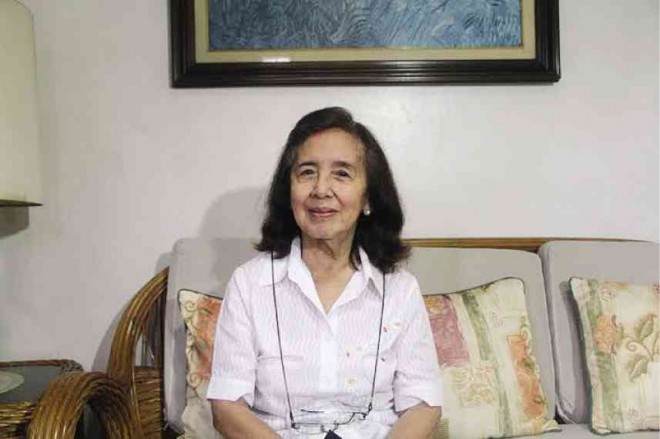
For 14-year-old violin student Pilar Benavides, it was a circuitous journey from her wartime home on Gastambide Street, Sampaloc, to the historic post-liberation concert of May 9, 1945 in the Santa Cruz church ruins.
In late 1944, probably when the American carrier raids started, the family—lawyer Virgilio Benavides, his wife Pacita, a son and three daughters Dr. Remedios, Lucila and Pilar—evacuated to Mabitac, Laguna, where they had rice and coconut lands and rented a house of mixed materials.
Pacita was a singer, had studied under Nelia Manalo Concordia and had given a recital. She encouraged her daughters to take up music. Remedios was a singer, Lucila a pianist who studied under Leonor Laperal, and Pilar took violin lessons from cellist-teacher Juan Tagle.
There was a Japanese garrison in the town who, as elsewhere, treated the people harshly. But they heard the music-making in the Benavides home, came to listen and invited them to play at the garrison.
There was some risk to this, as the two older sisters were already young ladies. One never knew how the Japanese soldiery would behave. But one of their leaders took a liking to Mrs. Benavides and even called her “Mama.”
This was of some help to the townspeople when five of them were caught on suspicion of guerrilla activities and sentenced to die. Mrs. Benavides successfully interceded for them. But she failed when she interceded for a sixth victim, a priest, who was executed.
When the war situation turned uncertain, they evacuated to a barrio called Galas, and on hearing that Manila was liberated, set out and crossed two mountains on muddy ground through forests to reach the city.
Her mother heard of auditions for the Manila Symphony Orchestra, but they had been held 10 days earlier. So she asked the help of her cousin Restituto “Restie” Umali, lead contrabass player in MSO who took Pilar to conductor Dr. Herbert Zipper.
Pert and petite
Pilar played the only piece she knew, Ernesto Vallejo’s Habanera Filipina no. 2, then Zipper made her play spicatto passages from the last movement of Beethoven’s Eroica symphony, a technique she had not studied. Evidently he was satisfied, because she was accepted and played in the first post-liberation concert at the Santa Cruz church ruins. Because she was so young, Time magazine, in a story on the MSO, referred to her as pert and petite.
In Manila they first lived on Raon then transferred to Mendoza Street in Quiapo, just around the corner from the MSO’s rehearsal space at my father’s office at La Rosario Distillery on R. Hidalgo Street. It had been a convoluted odyssey from Sampaloc to Quiapo through Mabitac.
At MSO events she remembers seeing a stand-offish young man who took scant notice of her and her colleagues, and whom they considered “soplado.”
Seventy years later, at the reenactment of the Santa Cruz Church concert sponsored by the Ortigas Foundation at Meralco Theater, as the culmination of the 70th anniversary observance of Manila’s liberation, she was asked to rise and be recognized as the sole local survivor of the orchestra that had performed the historical concert. She was greeted with thunderous applause.
Seated beside her was the same aloof young man she had noticed 70 years earlier. Both were now cane-wielding grandparents, and struck up a pleasant conversation. He was not aloof but quite friendly and strongly supportive, clapping as vigorously as the most enthusiastic members of the audience. In fact it was he who, in the search for surviving orchestra members during the run-up to the re-enactment concert, almost at the last minute identified and located her. That man was no other than this writer.

